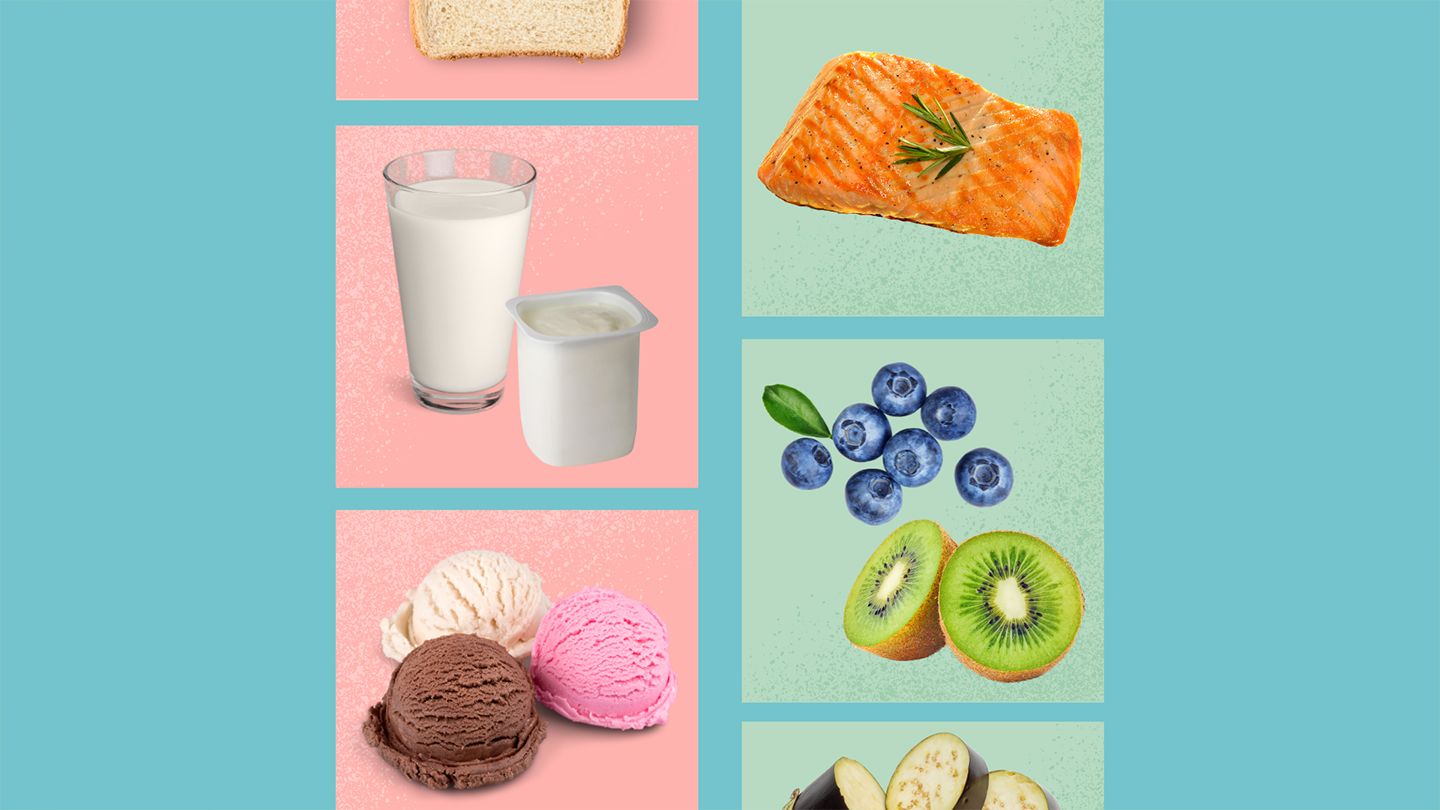
FODMAPs — fermentable oligosaccharides, disaccharides, monosaccharides and polypols — are a group of carbohydrates that are more difficult for people to digest, Zumpano says. Researchers believe the low-FODMAP diet may help with SIBO because “[FODMAPs] can be poorly absorbed and stimulate and give the bacteria food to grow. This is why they can worsen the digestive symptoms in some people,” Zumpano says.
- Eggplant
- Bok choy
- Green peppers
- Carrots
- Cucumbers
- Lettuce
- Potatoes
- Cantaloupe
- Kiwi
- Oranges
- Pineapple
- Blueberries
- Almond milk
- Brie
- Feta cheese
- Hard cheeses
- Eggs
- Firm tofu
- Plain cooked meats, poultry and seafood
- Rice
- Lactose-based milk, yogurt, and ice cream
- Wheat-based products, such as cereal, bread, and crackers
- Beans and lentils
- Apples
- Cherries
- Pears
- Peaches
- Artichokes
- Asparagus
- Onions
- Garlic
“You have to be very diligent about having a list available if you haven’t memorized it. It’s important to have a list available when you’re grocery shopping, cooking a meal, eating out or at a social event. That’s the tricky part,” Zumpano says.
Importantly, you shouldn’t be on this diet for more than six weeks, Dr. Rao says. “I would never recommend these diets long-term, because you’re cutting out a lot of foods and restricting yourself quite a bit. That can help starve off some of that bad bacteria, but if you don’t start adding in fermented foods after that initial improvement, you’re going to starve off your regular gut microbiome,” Rao says.
Source: bing.com




















